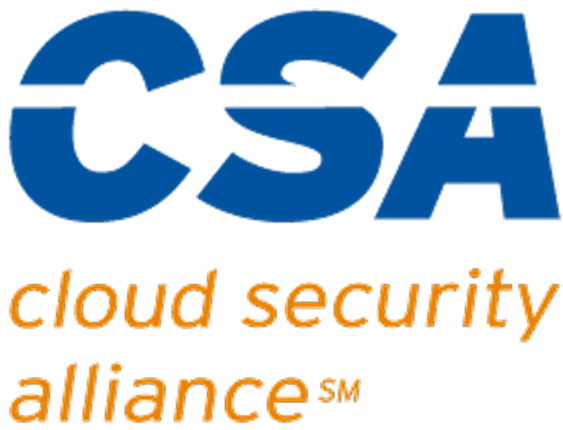Introduction
Is your computer running slowly? Do you have trouble opening programs or files? Many people experience these problems with their computers from time to time. In this article, we will discuss why your computer might be running slowly and offer some solutions on how to fix it.
Common causes of slow computer performance:
There are many reasons why your computer might be running slowly. Some of the most common causes include:
- A lack of RAM or hard drive space
- An old, failing, or fragmented hard drive
- Too many programs running at the same time
- Too many programs running at startup
- Too many browser add-ons
- Viruses or malware infections
- An outdated or corrupt driver or operating system
- Too many OS visual effects
- Overheated electronics due to failed cooling, internal dust
- Running in low-power mode on a laptop
- Underpowered hardware
Let’s look at each of these in detail and discuss some things that you can try to help speed up your machine.
Lack of RAM or hard drive space
One of the most common reasons a computer might be running slowly is that it doesn’t have enough RAM or hard drive space. When your computer starts to run out of memory, it has to start using virtual memory, which can cause a significant slowdown in performance. When your computer runs low on disk storage, your computer may slow down because the operating system doesn’t have enough free space to work optimally.
You can try to free up some space on your hard drive by deleting temporary files, uninstalling programs that you don’t use, and moving or archiving large files to an external drive. Your operating system typically includes tools for checking hard disk utilization and cleaning up unwanted files – check out online guides for doing this on Windows and macOS.
If your computer is running low on RAM (memory) in routine use, there are some techniques to reduce memory usage that you can try (Mac, Windows), but often the only practical solution is to add more RAM. There are tools for checking RAM usage on Windows and macOS. If you decide to increase the amount of RAM in your computer, check the manufacturer’s website for the type and size of memory modules that are compatible with your machine first.
An old, failing, or fragmented hard drive
NOTE: The discussion about defragmentation which follows is only applicable to HDDs (spindle-based Hard Disk Drives). Most newer computers use SSDs (Solid State Drives). Defragmentation utilities will not improve the performance of an SSD and can shorten its life, so disregard this section if your computer uses an SSD for storage.
As a hard drive starts to fill up, it can become fragmented – meaning that the files on the drive are split into pieces that are spread out across many different locations on the disk. This can cause your computer to slow down when accessing or reading files from the hard drive because the file has to be read or written at many different storage locations. Additionally, over time, hard drives can start to fail. When this happens, errors can cause the drive not to read or write data as quickly as it used to, which will cause a slowdown in your computer’s performance.
One way that you can try to fix these problems is by using a disk defragmenter utility. This tool will reassemble the fragmented files back together so they can be read and written more quickly. You can try using the built-in disk defragmenter in Windows. If you are using a Mac, defragmentation is generally not needed except in certain situations, and you’ll need to seek out a third-party tool like Disk Defrag Pro.
If your hard drive is starting to fail, you may want to consider backing up your data and purchasing a new hard drive. There are some tools in Windows and macOS that can be used to check the health of your hard drive. If you decide to replace it, there are many cloning utilities that can be used to migrate the entire contents of the old hard drive to the new one.
Too many programs running at startup
When you start up your computer, it automatically loads a certain number of programs. Many of these programs are typically necessary for the normal functioning of Windows or macOS, but if there are too many of them, they can start to compete for resources, which can cause your computer to slow down.
You can try to fix this problem by using the Task Manager in Windows or Activity Monitor in MacOS to identify and close unnecessary programs and disable automatic startup of programs – just be aware that some startup apps may be needed for the proper function of your system.
Too many programs running at the same time
In some cases, your computer may slow down because there are too many programs running simultaneously. This can be especially true if you’re trying to run a program that requires a lot of resources, like a video game or high-end software application.
If this is happening, try closing some of the other programs running on your computer. In some cases, you may need to restart your computer to free up enough resources for the program you’re trying to run. Additionally, try turning off any unnecessary features or settings in the program you’re trying to use. For example, if you’re trying to play a game, you may want to disable specific graphics settings or reduce the resolution.
Too many browser add-ons
Browser add-ons (also called “extensions”) are small programs that can be installed in your browser to provide extra functionality, like ad-blocking or password management. While most of these add-ons are helpful and useful, too many of them can slow down your computer because they need to run in the background while browsing the web.
You can try to fix this problem by disabling or removing any browser add-ons that you don’t need. The steps to do this are a bit different for each browser; here’s how to manage extensions in Chrome. In some cases, you may need to restart your browser for the changes to take effect. Additionally, try using a lightweight browser like Opera or Microsoft Edge if you find that your computer is slow when using a heavier browser like Chrome or Firefox.
Viruses or malware infections
Computer viruses and malware can cause all sorts of problems that can slow down your computer. For example, malware can launch programs in the background without your knowledge, which can use up resources and cause your computer to slow down. Malware that uses your computer to mine cryptocurrency can be incredibly taxing on the system. Additionally, malware can prevent you from running specific programs or accessing certain websites, making it difficult to do what you need to do.
Fortunately, many programs exist that can be used to remove malware from your computer, such as Malwarebytes and Avast. If you think that your computer is infected with malware, you should run a scan with an antivirus / antimalware program to get rid of any malicious software that’s found. Additionally, keep your antivirus program and other software up to date to help prevent malware in the future.
Outdated or corrupt driver or operating system
An outdated or corrupt driver can cause your computer to slow down, especially if it’s a driver for a component that’s important to the performance of your system. For example, an outdated graphics card driver can cause your games to run slowly, and an old audio driver can lead to choppy sound playback.
Similarly, an out-of-date or corrupted operating system can also cause your computer to run slowly. This is because the older version of the OS may not be as efficient as the latest version, and it may also have problems running some newer programs.
If you’re experiencing slow performance on your computer, one of the first things you should do is check to make sure that all of your drivers are up to date. You can do this by running “Check for Updates” on Windows or “Software Update” on macOS. Install the recommended updates and reboot your computer if prompted.
To update additional drivers on Windows, click “View Optional Updates,” click the “Driver Updates” tab, then install any driver updates that are listed there. The software updater will automatically install Apple driver updates on macOS, but third-party drivers may need to be downloaded and installed manually.
Too many OS visual effects
Windows has many visual effects that can be enabled or disabled to change the appearance and behavior of the OS. Some of these options are turned on by default, and while they may look nice, they can also slow down your computer.
To see which visual effects are enabled on your computer, go to “Settings” > “System.” In the “Performance” section, you can see which visual effects are in use. To disable a visual effect, click the “Turn off” button. You may need to restart your computer for the changes to take effect.
On macOS, you can disable visual effects using “Apple Menu” > “System Preferences” > “Accessibility” > “Display,” and ticking the boxes to reduce motion and reduce transparency.
Overheated electronics due to failed cooling, internal dust
Overheated electronics can cause many problems, including slowing down your computer. If your computer is running slowly and you suspect that it may be due to overheating, one of the first things you should do is clean out the dust inside your computer. Dust can build up over time and prevent air from flowing properly, leading to heat build-up.
To clean out the dust from your computer, you’ll need to open up the case and remove the dust using a can of compressed air or a powered blower designed for cleaning electronics. Be sure to hold the can upright and spray in short bursts to avoid damaging any components. Once you’ve removed the dust, close up the case and check if the problem persists.
If your computer is still running slowly, it’s possible that the cooling system is not working correctly. In this case, you’ll need to take your computer to a repair shop or replace the cooling system yourself.
Running in low-power mode on a laptop
If you’re running in low-power mode on a laptop, this may be causing your computer to run slowly. Your laptop will use slower processor speeds and lower screen brightness to conserve battery power when in low-power mode. This can lead to longer wait times when starting up programs or switching between tasks.
To test changing out of low-power mode, press the power button on your laptop and hold it down until the “Restart” option appears. Click “Restart” to restart your computer in normal mode and see if performance improves before changing your system configuration to disable low-power mode on Windows or macOS.
Underpowered hardware
One of the leading causes of a slow computer is insufficient or outdated hardware. When your computer’s processor, memory, or storage are overloaded, it can lead to a slowdown.
If your computer is slow and you’ve ruled out all of the other potential causes, it may be time to upgrade your hardware. You can purchase new processors, memory, and storage devices from various manufacturers. Be sure to check the system requirements for your software before making any purchases to ensure that your new components will be compatible. You can instead take your computer to a dealer that offers service if you don’t feel comfortable doing the work yourself.
Depending upon how your system is, or what is and is not upgradable, it may make more sense to purchase a newer, faster system rather than trying to upgrade your old one.
Conclusion
If your computer is running slowly, there are several potential causes. Like running in low-power mode on a laptop, some of these can be easily fixed by changing a setting. Others, like insufficient or outdated hardware, may require you to purchase new components. It may be more cost-effective to simply buy a new computer in some cases. Whichever route you decide to take, be sure to research your options and decide what is best for your needs. Thanks for reading!




